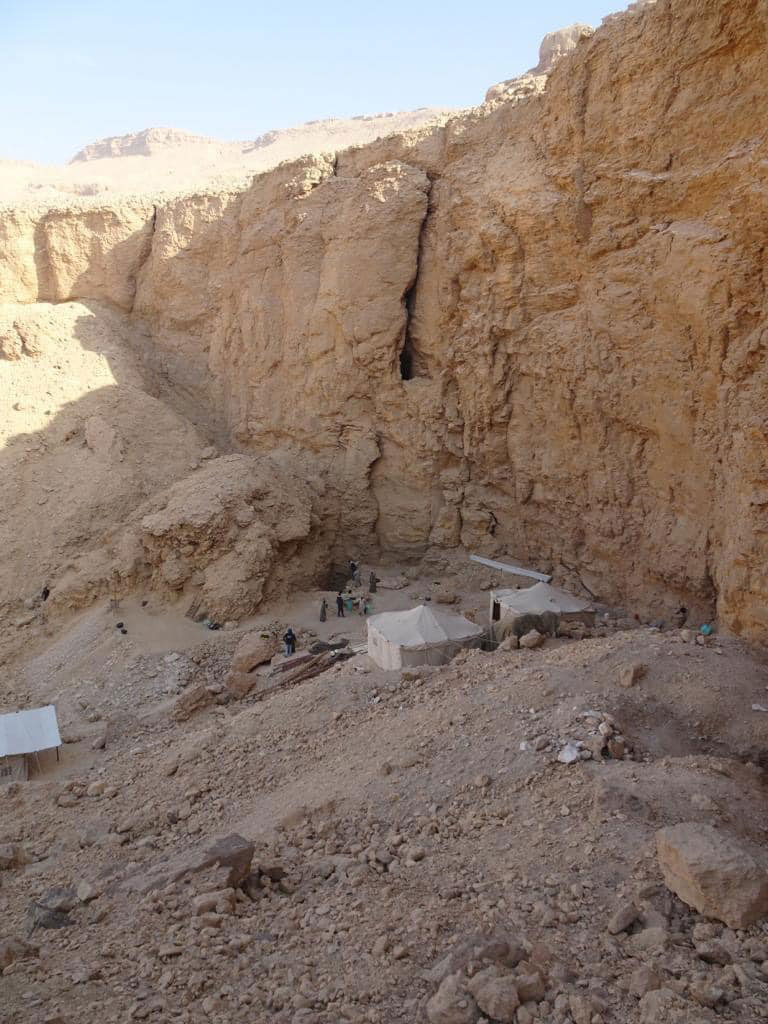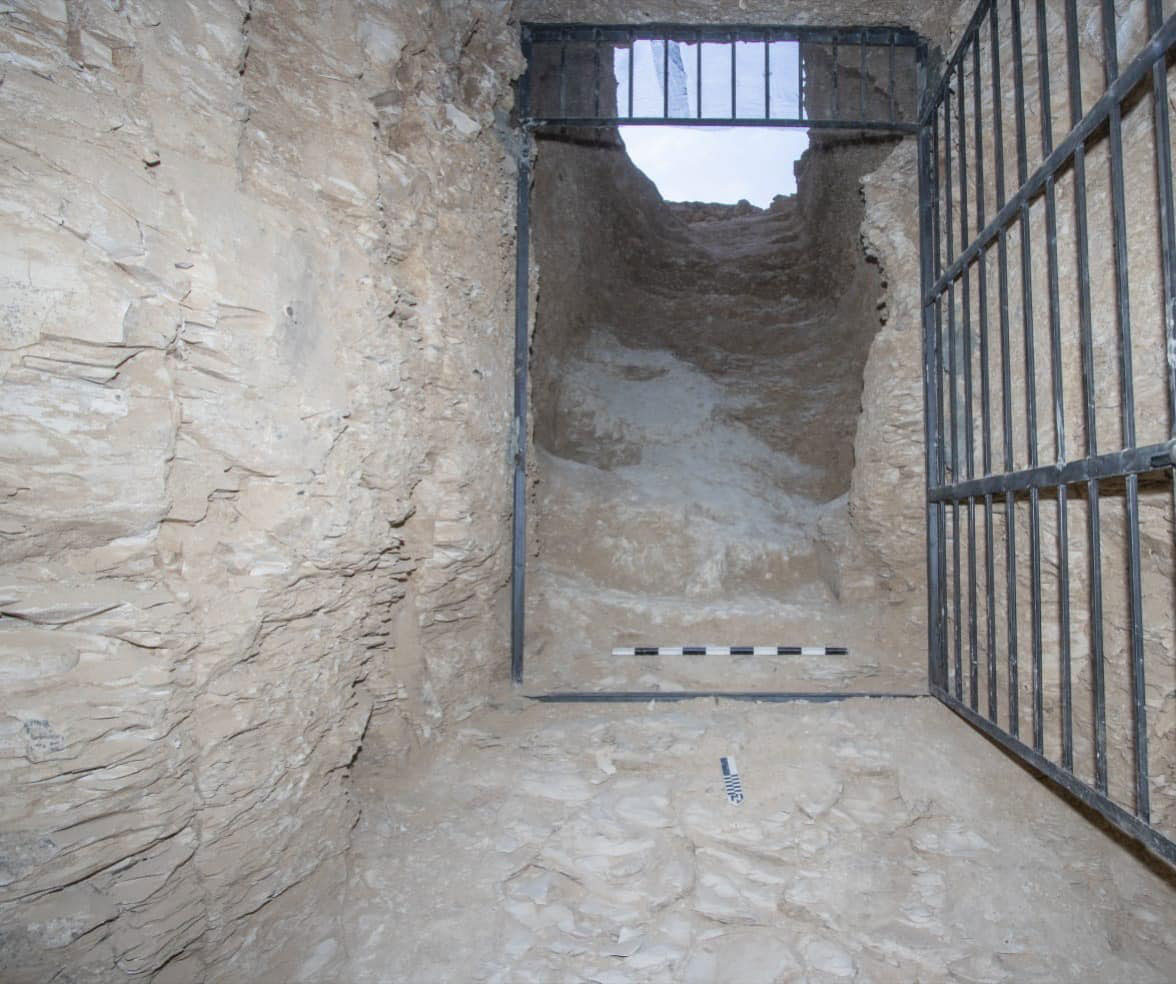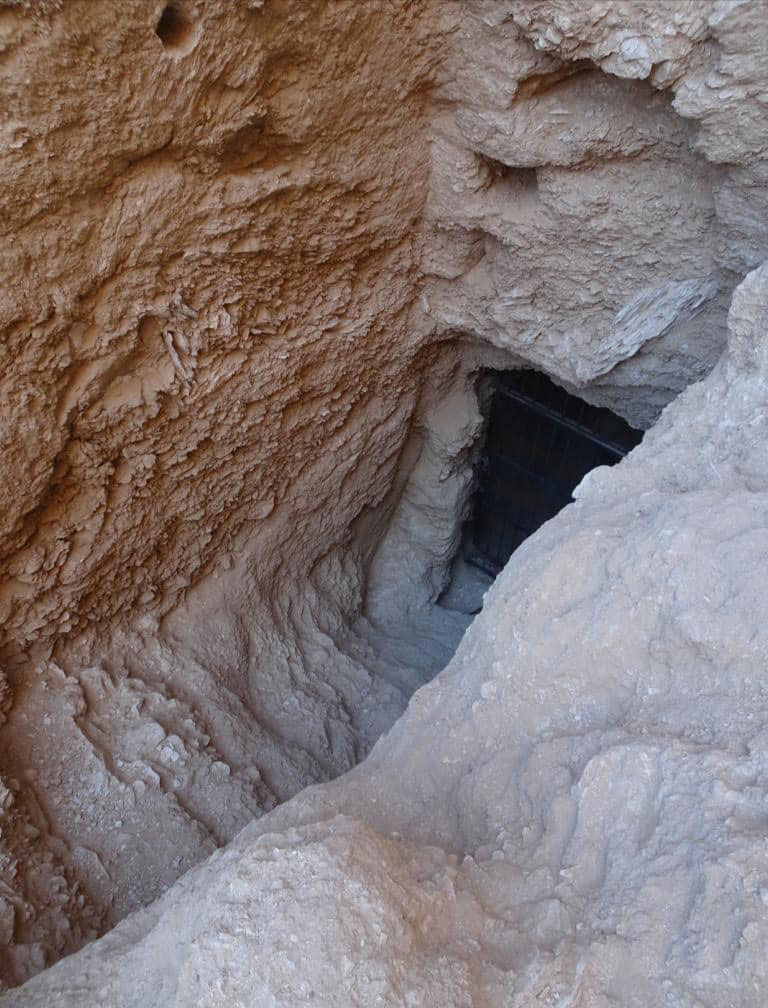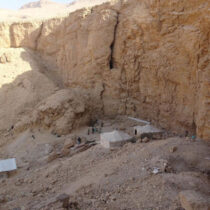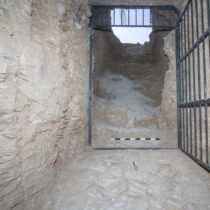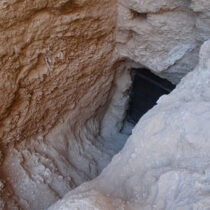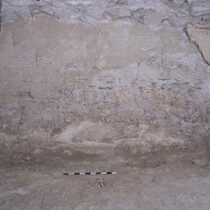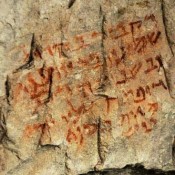A royal tomb’s discovery has been reported at Luxor’s Western Valleys by the joint Egyptian-English mission of the Supreme Council of Antiquities and the New Kingdom Research Foundation (University of Cambridge) working at the Western Valleys’ (or Western Wadis) area, SW of the Valley of the Kings, on the Nile’s west bank opposite Luxor. In particular, the mission working under the joint direction of Dr. Fathi Yassin and Dr. Piers Litherland has located the entrance to what appears to be a tomb destined to host royalty. The tomb has been found at a site known as Valley No C./ Wadi C., which is an extension of Wadi Gabbanet El Qurud, the middle of three key Western Valleys.
According to Dr. Mostafa Waziri, Secretary General of the Supreme Council of Antiquities, preliminary evidence that has been uncovered so far indicates that the monument revealed may date back to the Thutmoside era (early- to mid-18th dynasty), but this date is yet to be confirmed by further documentation. For his part, Dr. Fathi Yassin, the project’s Egyptian co-director and Director General of Upper Egypt Antiquities, stated that the mission aims to further excavate as well as document the whole tomb in order to map its architectural plan and technical elements. For the record, Dr. Mohsen Kamel, Director of the Western Valleys Site, has added that the tomb is in a poor state of preservation as a result of the torrents that occurred during antiquity and, flooded its chambers with thick deposits of sand and limestone. The floods and the debris they brought have likely led to the obliteration of many of the tomb’s features and inscriptions. It is important to add that a few chambers near the entrance are already accessible.
From his part, Dr. Piers Litherland, the project’s British co-director and head of the New Kingdom Research Foundation at the McDonald Institute for Archaeological Research at Cambridge, stated that the tomb may have belonged to Thutmoside minor royalty (probably one or more queens, princes or princesses), as few such tombs have been revealed. According to the expedition’s announcement, partial inscriptions and ceramic evidence suggest the tomb was constructed during the joint reign of Thutmose III and Hatshepsut, while it may have been altered several times.
Information about the burials of 18th Dynasty royal family members (apart from kings) has hitherto been scarce, although the Western Valleys have been connected with such uses. Wadi Gabbanet El Qurud, in particular, is the findspot of the non-monumental yet super-rich tomb of three minor wives of Thutmose III, which was located as early as 1916. At the same time, a cliff tomb attributed to the female pharaoh Hatshepsut has been found at the easternmost main Valley, Wadi Sikkat Taqet Al Zaid (known as Valley A). Valley C itself is the findspot of a tomb containing an ill-surviving graffito recording the name of Hatshepsut’s daughter, Princess Neferure. It is worth adding that the Neferure graffito tomb is found in close proximity to the one found now by the Egypto-Engish team.
Since the early ‘10s, Piers Litherland has enlarged the corpus of 18th Dynasty royal persons’ burials, working in the framework of The Western Wadis of the Theban Necropolis project. Investigating a group of shaft tombs on the site of Wadi Bairiya, he revealed the identities of more than thirty royal persons who lived during the time of Amenhotep III and whose burials were deliberately destroyed in antiquity. His work complements the findings of the team which, in 2014, under the direction of Susanne Bickel, located a mass burial of mid-18th Dynasty minor royalty in the undecorated KV 40, in the Valley of the Kings. It also sheds light on the form of a burial discovered in Sheikh Abd El Qurna as early as 1857, whose exact spot remained unknown and is only documented by objects now in Edinburgh. Let’s hope that the newly found tomb will reveal more evidence of funerary customs followed by 18th Dynasty minor royalty, enabling us to suggest patterns of burial care across the period.
